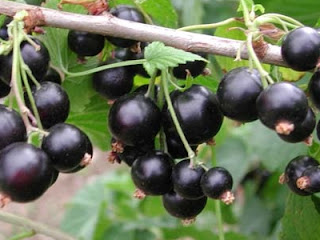Acid
reflux is an uncomfortable health condition to have and there are certain types
of foods that cause the symptoms of acid reflux to become worse. It is
important to note that not every food that causes heartburn in one person will
cause it in another person. If you have acid reflux, you should take note of
the following seven foods that can cause acid reflux, but also do a little bit
of trial and error to see what causes your symptoms.
Onions
Many people experience acid reflux symptoms when they eat onions. Avoid onions as much as possible, especially raw onions.
Many people experience acid reflux symptoms when they eat onions. Avoid onions as much as possible, especially raw onions.
Garlic
Another good-for-you food that isn't so good for acid reflux is garlic. Some people experience heartburn after eating a lot of the stinking rose.
Another good-for-you food that isn't so good for acid reflux is garlic. Some people experience heartburn after eating a lot of the stinking rose.
Tomatoes
Like onions and garlic, tomatoes are full of health benefits but are usually too acidic for people with acid reflux.
Like onions and garlic, tomatoes are full of health benefits but are usually too acidic for people with acid reflux.
Spicy
Foods
Eating spicy foods like peppers and chili may cause the stomach to become
upset, which can result in the stomach acids irritating the esophagus. Try
avoiding spicy foods and see if it helps your heartburn.
Fried
Foods
Most people know that fried foods can cause acid reflux, but they don't
understand why. Foods that are high in trans fat slow down the digestive
system, which may cause digestive juices to move back up the esophagus. Avoid
eating foods such as French fries, doughnuts, egg rolls, and any food that has
been deep fried in oil.
Baked
Goods
Bakery produces baked foods such as brownies, cake, doughnuts, muffins and
other sweet treats usually contain trans fats too. These foods also have high
levels of preservatives and other unnatural ingredients, which may cause acid
reflux to become worse.
Soda
and Caffeine Drinking soda and other carbonated beverages such as tonic
water may increase your acid reflux symptoms, because the carbonation increases
the pressure in the stomach. On top of that, caffeine, which is present in many
sodas, can be a heartburn trigger. Coffee, iced tea, and any other caffeinated
beverages are also potential culprits. Chocolate is another caffeine-containing
food that you may want to avoid to alleviate symptoms.
Alcohol
Alcohol, especially when combined with other heartburn-causing foods like garlic and onions or tomatoes, can lead to acid reflux symptoms.
Alcohol, especially when combined with other heartburn-causing foods like garlic and onions or tomatoes, can lead to acid reflux symptoms.
Animal
Protein
Many people experience an increase in acid reflux when they are eating animal
protein such as meat and dairy. These foods are very hard to digest and they
slow down the digestive process, which may cause the acids to irritate the
esophagus. Additionally, dairy foods such as milk and cheese cause the body to
excrete extra stomach acids to aid digestion.
Citrus
Fruit and Juice
Citrus fruits and juices are highly acidic and can cause heartburn in patients
with acid reflux. Oranges, orange juice, and grapefruit can be triggers. If you
have acid reflux and still want to enjoy citrus fruit, try eating it for
dessert on a full stomach rather than on an empty stomach.

























